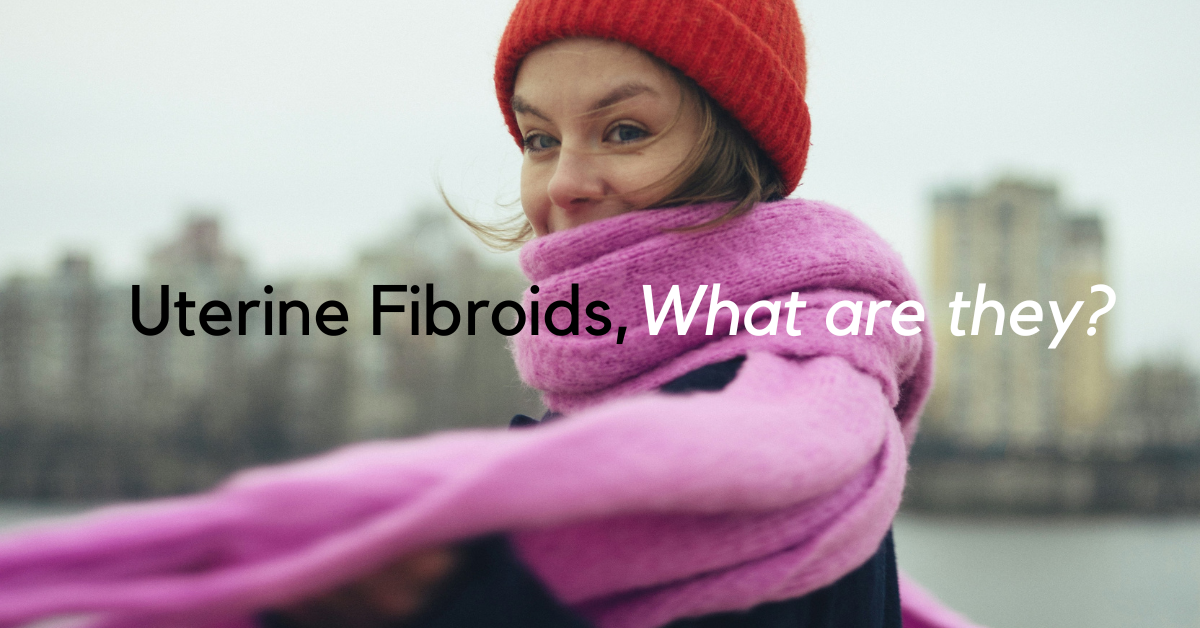You just left your doctor’s office with a diagnosis of uterine fibroids. What now? Don’t panic! Uterine fibroids are a common women’s health condition. While they can be challenging to treat, plenty of support and options are available.
In this article, we’ll answer key questions about uterine fibroids, including:
- What are fibroids?
- Who is at risk for developing fibroids?
- Why do fibroids happen?
- How can fibroids be treated?
- When should you seek medical help for fibroids?
What Are Uterine Fibroids?
Uterine fibroids, also known as leiomyomata, are the most common non-cancerous tumors affecting women. These growths originate in the smooth muscle of the uterus, called the myometrium. Hormonal changes, especially in estrogen levels, can cause these muscles to grow abnormally, sometimes extending outside the uterus.
Who is most affected? According to a 2003 study, fibroids are more common in Black women: by age 50, 70% of white women and over 80% of Black women will develop uterine fibroids.
Who Is at Risk for Uterine Fibroids?
The exact cause of uterine fibroids isn’t fully understood, but certain factors increase your risk:
- Hormonal Factors: Fibroids are closely linked to estrogen. They typically appear after puberty and are more likely to develop with age.
- Early Menarche: Getting your first period before age 11 increases your risk.
- Never Being Pregnant: Women who haven’t given birth are at higher risk.
- Obesity: Excess body weight is associated with fibroid growth.
- Late Menopause: A longer reproductive span increases the likelihood of developing fibroids.
- Family History: A history of fibroids in your family raises your chances.
- African Descent: Black women are more likely to develop fibroids and experience severe symptoms compared to other groups.
What Are the Symptoms of Uterine Fibroids?
Not all fibroids cause symptoms, but when they do, they may include:
- Heavy Menstrual Bleeding: (Menorrhagia)
- Menstrual Pain (Dysmenorrhea)
- Irregular Bleeding Between Periods: (Metrorrhagia)
- Pain During or After Sex: (Dyspareunia)
- Pelvic Pain or Pressure
- Bowel and Bladder Issues: Constipation or frequent urination due to pressure on nearby organs.
- Anemia: Caused by heavy bleeding.
Many fibroids are discovered incidentally during medical imaging for unrelated reasons, as they often don’t cause noticeable symptoms.
Treatment Options for Uterine Fibroids
1. Watchful Waiting
If your fibroids aren’t causing symptoms, your doctor may recommend regular monitoring without immediate treatment.
2. Medical Management
Medications focus on reducing symptoms like heavy bleeding and pain:
- Hormonal Birth Control: Pills or a levonorgestrel IUD can help manage bleeding. The IUD is especially effective due to minimal side effects, though it may not suit all cases.
- GnRH Agonists (e.g., Leuprolide): Temporarily shrinks fibroids by lowering hormone levels but is typically used short-term due to side effects like bone loss.
- NSAIDs: Pain relievers like ibuprofen can ease menstrual cramps but don’t reduce fibroid size.
3. Surgical Options
Surgery may be necessary for severe cases or when fertility preservation is a priority:
- Endometrial Ablation: Reduces heavy bleeding but isn’t suitable for all fibroid types.
- Uterine Artery Embolization (UAE): Cuts off blood flow to fibroids, reducing their size. Fertility effects remain unclear.
- Myomectomy: Removes fibroids while preserving the uterus, ideal for women wanting to have children.
- Hysterectomy: The most definitive treatment, involving removal of the uterus.
- MRI-Guided Focused Ultrasound: A newer, non-invasive procedure with promising results but limited long-term data.
Key Facts About Uterine Fibroids
- Fibroids Are Rarely Cancerous: Only 1 in 350 cases involves cancer. However, rapidly growing fibroids or those developing after menopause should be evaluated.
- Fibroid Size Changes: Hormone levels affect fibroid growth. They may shrink after menopause when hormone levels decrease, often improving symptoms.
When to Seek Emergency Care
In rare cases, fibroids can cause emergencies. Seek immediate medical attention if you experience:
- Severe Abdominal Pain: Pain that doesn’t improve with over-the-counter medication.
- Heavy Vaginal Bleeding: Especially if accompanied by dizziness, extreme fatigue, or signs of anemia.
Conclusion
Whether you’re newly diagnosed with uterine fibroids or exploring treatment options, we hope this guide has been helpful. Share it with a friend or family member who might need it. If you’re struggling with your diagnosis, help is available : https://vivre100fibromes.ca/en/
Stay tuned for our next article, where we’ll discuss natural remedies for uterine fibroids!
Sources
Hartmann KE, Fonnesbeck C, Surawicz T, et al. Management of Uterine Fibroids [Internet]. Rockville (MD): Agency for Healthcare Research and Quality (US); 2017 Dec. (Comparative Effectiveness Review, No. 195.) Introduction. Available from: https://www.ncbi.nlm.nih.gov/books/NBK537736/


